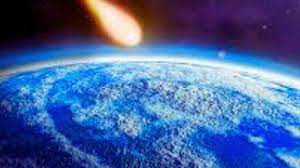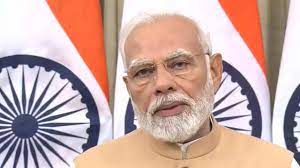
International Asteroid Day 2023: The United Nations General Assembly passed a resolution (A/RES/71/90) in December 2016 designating June 30th as International Asteroid Day. The goal of this day is to remember the Tunguska impact, which occurred on June 30, 1908, in Siberia, Russian Federation. Additionally, the day aims to raise public awareness about the potential hazards posed by asteroid impacts and educate people about the global crisis communication measures to be taken in the event of a credible near-Earth object threat.
The General Assembly made this decision based on a request made by the Association of Space Explorers and approved by the Committee on the Peaceful Uses of Outer Space (COPUOS).
Significance of World Asteroid Day
World Asteroid Day is dedicated to preparing the planet for an asteroid impact. Another goal for the day is to speed up the discovery of asteroids. Scientists think that only a small percentage of asteroids have been detected in space thus far, with hundreds more still to be discovered.
As per the UN website, The International Asteroid Warning Network (IAWN) employs well-defined communication strategies and procedures to help governments analyse potential asteroid impacts and plan mitigating responses. The Space Mission Planning Advisory committee (SMPAG) is an inter-space agency committee that evaluates near-Earth Object deflection technologies and seeks consensus on planetary security proposals.
History of International Asteroid Day
Near-Earth objects (NEOs) are asteroids or comets that come close to Earth’s orbit and pose potential catastrophic threats to our planet. NASA’s Center for NEO Studies has discovered over 16,000 Near Earth Asteroids. The Tunguska event in Siberia, Russia, on June 30, 1908, remains the largest recorded asteroid impact in Earth’s history.
A huge fireball described as a “superbolide” entered Earth’s atmosphere and dispersed over Chelyabinsk, Russia, on February 15, 2013. According to NASA, the asteroid had an estimated diameter of 18 metres and a mass of 11,000 tonnes.The impact energy of the Chelyabinsk Fireball was estimated to be around 440 kilotons of TNT explosives, making it the most energetic impact event since the Tunguska blast in 1908.
Recognizing the global nature of the NEO impact hazard, the United Nations Office for Outer Space Affairs (UNOOSA) has been actively involved in addressing this issue for many years. Cooperation among the international community is essential to identify NEOs that pose a threat and plan appropriate mitigation campaigns to ensure public safety.
To respond effectively to the NEO impact threat, the Committee on the Peaceful Uses of Outer Space (COPUOS) endorsed recommendations in 2013. This led to the establishment of two initiatives in 2014: the International Asteroid Warning Network (IAWN) and the Space Mission Planning Advisory Group (SMPAG).
The International Asteroid Warning Network (IAWN) uses well-defined communication systems and protocols to help nations analyse the potential repercussions of an asteroid impact and organise mitigating strategies.
The Space Mission Planning Advisory Group (SMPAG) is an inter-agency forum that identifies the necessary technologies for deflecting near-Earth objects. It aims to build consensus on recommendations for measures to defend the planet from potential NEO threats.





